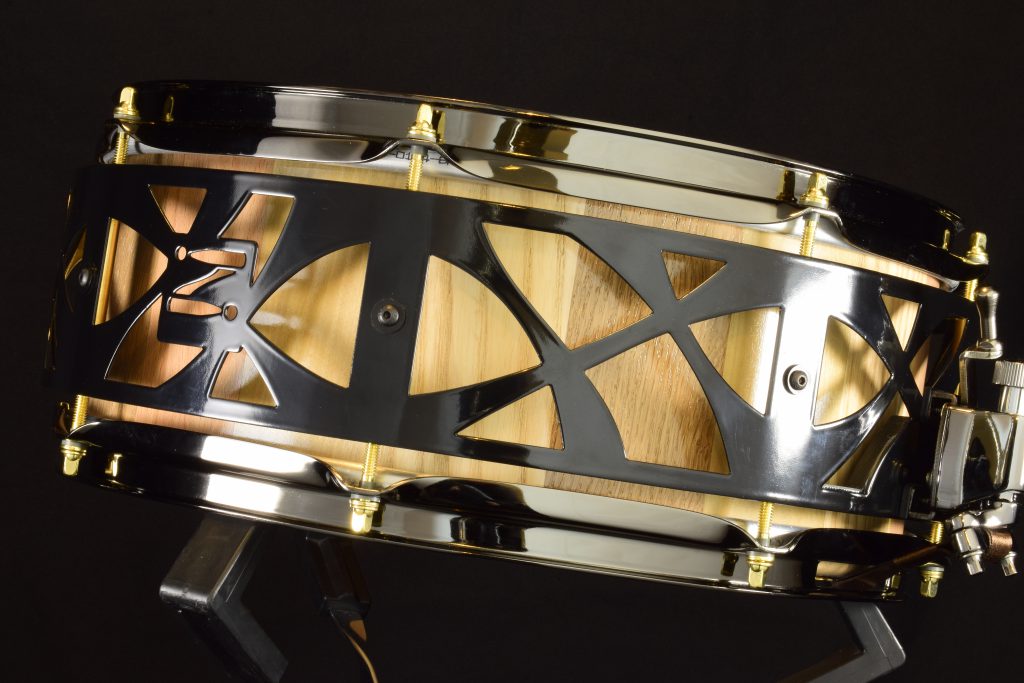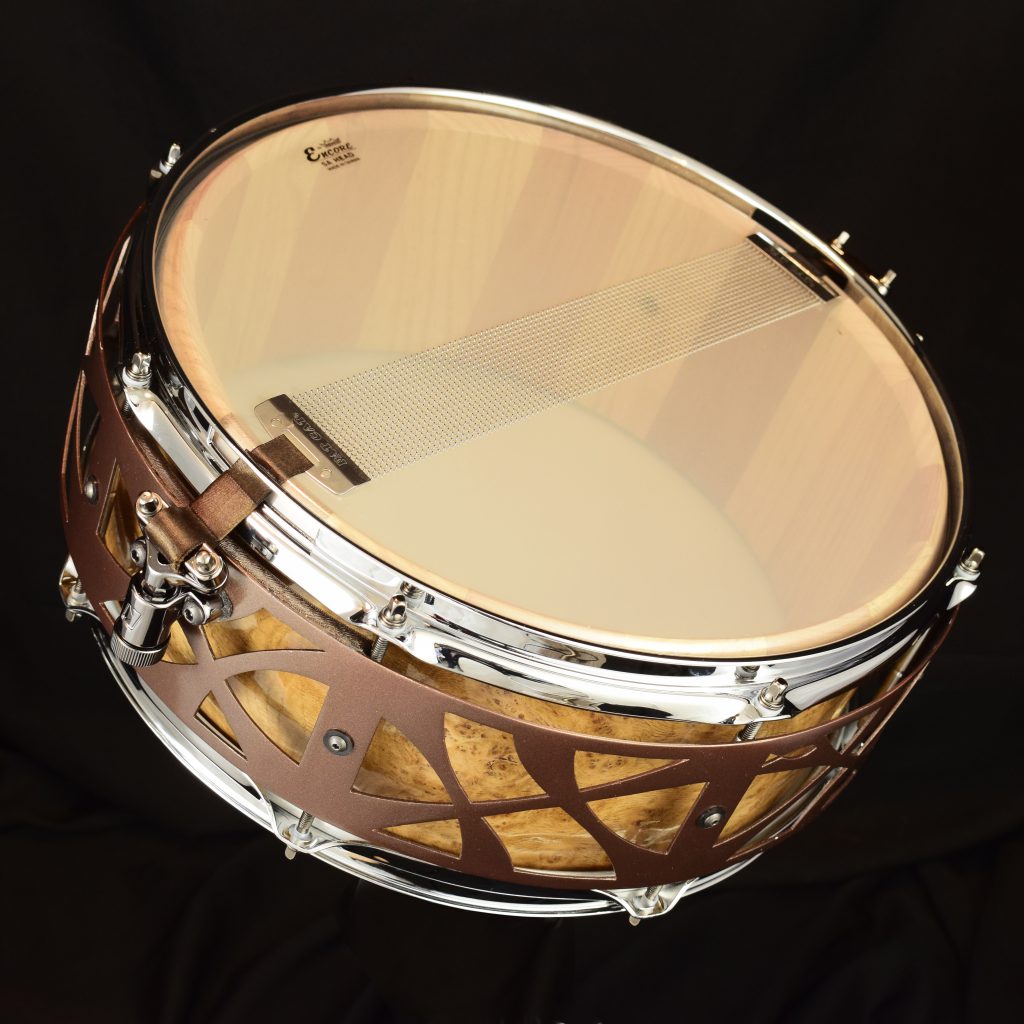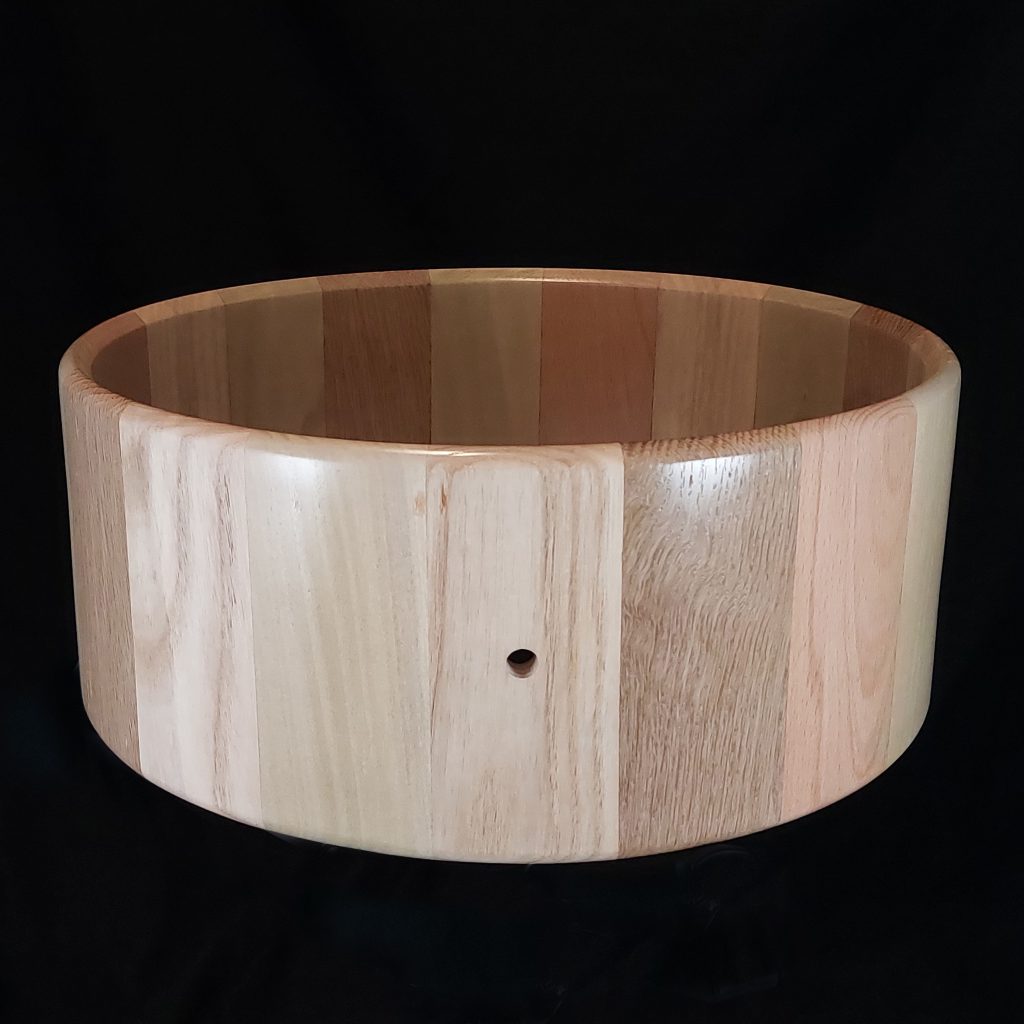The Difference: Free-Floating vs. Conventional Snares
I’ve spent years chasing the perfect snare sound — and I finally found it. The ring, the shell, the snare, all working together in harmony. When I created this full free-floating snare, it wasn’t just about making it look different — it’s about making it sound different.
In a traditional snare, the tuning lugs are bolted directly to the shell, which has an interesting side effect: each tuning lug essentially creates its own set of overtones. So when you tune a conventional snare, you’re dealing with a complex mix of frequencies — each lug affecting the sound in its own way. The result? A snare drum that can sound a little muddled or difficult to dial in.

The free-floating design changes all of that. By disconnecting the tuning lugs from the shell and attaching them to a separate tube lug (that’s not physically connected to the shell), you eliminate the complex web of overtones. What you’re left with is a purer, more focused tone — almost like having just two dominant overtones, instead of a bunch of unpredictable ones. The sound is cleaner, more defined, and way easier to control.
But it’s not just about the sound. This simple design also makes tuning faster and more precise. With the lugs floating independently, you can change heads without needing to mess with the snare wires — it’s quicker, easier, and keeps everything intact while you dial in your perfect sound.
In short, the free-floating snare isn’t just a different way to build a drum; it’s a better way. Cleaner tone. Faster tuning. Less hassle.

Every shell is built from sustainably sourced wood, chosen for its unique tonal character. Here’s a quick guide to help you pick the right wood for your voice:
Ash
Punchy and bright with excellent projection, great for cutting through live mixes while still delivering a balanced tone.
Red Oak
Strong and full-bodied with a warm, deep presence and a pronounced midrange — perfect for a powerful backbeat.
Cherry
Smooth, warm, and musical with rich low-mids and a slightly softer attack, ideal for studio work and subtle playing styles.
Maple
The all-rounder — balanced, open, and versatile, with a slightly scooped midrange that lets both highs and lows shine.
Spalted Maple
Tonally similar to maple but with a slightly more complex, resonant character thanks to its unique grain, and visually stunning too.
Beech
Classic and controlled with a focused, punchy tone, strong mids, and a dry, articulate response perfect for precise playing.
Alder
Warm and rounded with a quick decay, giving you a smooth, vintage-inspired snare sound that blends beautifully in many styles.
If you’d like to talk about which shell or parts would best match your ideas, just get in touch — I’m happy to help you put together something special.
